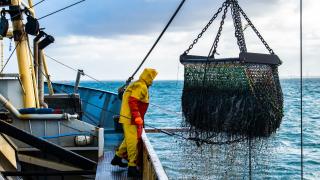Aquatic foods have been a dietary mainstay for much of the world’s population and seafood is one of the fastest growing sectors of global animal protein production. The United Nations estimates that more than 3.3 billion people around the world depend on fish and seafood for at least 20% of the animal-protein in their diets. Many forms of fishing and aquaculture−especially traditional methods and appropriate-scale kelp and shellfish farming – support climate resilience and culturally appropriate diets. The increased corporate and investor interest in aquatic foods suggests that we take a closer look at what’s happening now and what might be on the horizon. Aquaculture and fisheries also deeply intersect the issues of ocean health, biodiversity, food systems, climate adaptation, sustainable communities and the livelihoods of Indigenous peoples.
EGA's new Summary of Funding to Aquaculture & Fisheries, 2016-2021 report dives deep into over $500 million in Aquaculture & Fisheries grants made between 2016 and 2021, revealing gaps in the geographic and issue focus areas. Further, it examines funding that supports different aquaculture methods, such as open-ocean aquaculture and on-land recirculating aquaculture; seafood market strategies including local seafood supply chains, seafood certification, and transparency & traceability; and tribal fisheries and Indigenous aquaculture projects. The report also compares the funding given to various aspects of sustainable fisheries management, including fishing community engagement and fisheries management policy & research.
EGA members can access the full report below by logging into your member accounts.
Non-members are welcome to download the Executive Summary report below.
